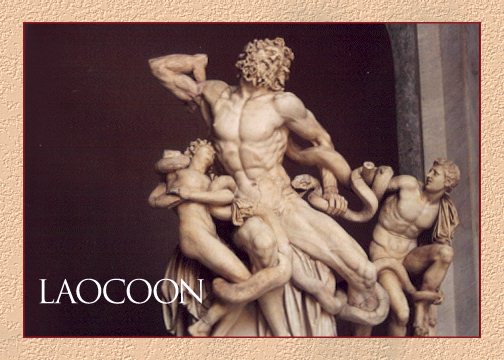

"The reputation of some [artists], distinguished through their work may be, has been obscured by the number of artists engaged with them on a single task, because no individual monopolizes the credit nor again can several of them be named on equal terms. This is the case of the Laocoon in the place of the emperor Titus, a work superior to any painting and any bronze. Laocoon, his children and the wonderful clasping coils of the snakes were carved from a single block in accordance with an agreed plan by those eminent craftsmen Hagesander, Polydorus, and Athenodorus, all of Rhodes."
Pliny, Natural History
Unearthed near Rome during the Renaissance, the priest Laocoön and his sons are shown being punished for having warned the citizens of Troy about the Trojan Horse. (It is Laocoön who says to beware Greeks bearing gifts.) Thought now to be a first-century AD copy of a second-century BC bronze, the marble statue was reconstructed in the sixteenth century, the missing right arm extended and entwined with the serpents sent by Poseidon. Then, in 1960, the original arm, which had been discovered in 1903, was reattached. A second son on the right may have been added to the copy to reflect the Roman version of the story as told by Virgil in his Aeneid.